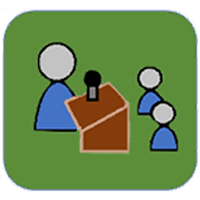Firefighter Safety
Webinar recording.
Presenter: Marc Titus, Staff Specialist, Nevada Division of Forestry’s Fire Adapted Communities and MS Student in Psychology, Arizona State University.
Description: PTSD is quietly impacting wildland firefighters with its often devastating personal and professional repercussions. While no official numbers exist, suicide has become another statistic now necessary to track within the wildland community as anecdotal data show an alarming trend. While agency’s come to grips with this burgeoning problem, firefighters can educate themselves to better understand the dynamics of stress, trauma and PTSD. This event will provide a unique view of the insidious nature of trauma, its effects on the human being with an eye towards recovery and nine key insights derived from the experiences of a wildland firefighter afflicted by this nervous system injury.
View report.
This progress report highlights some of the many contributions and impacts of the JFSP over the past 2 years including:
- Continued scientific output from wildland fire research through manuscripts, management briefs, decision-support tools, and syntheses.
- Efficient delivery of wildland fire science to practitioners through the nationwide Fire Science Exchange Network.
- Incorporation of wildland fire science to improve policy, restoration success, public and firefighter health and safety, and fuels management, among others.
Webinar recording.
A presentation on Potential Operational Delineations (PODs) from multiple perspectives including both scientists and managers. We will discuss how PODs were used in Northern New Mexico past fire seasons where PODS were utilized; with an emphasis on PODs as a fire planning tool, new developments in research and applications, and innovations within the planning framework.
Visit conference website.
A virtual conference, for real world problems. Across four days in May 2021, the IAWF presented real world risks and opportunities in an online environment. We will connect a truly international audience, with global topics and speakers from around the world, on different continents and time zones. The IAWF 16th Wildland Fire Safety Summit and the 6th Human Dimensions of Wildland Fire Conference addressed the issues that make the global wildland fire community safe, smart and supported.
Potential Operational Delineations (PODs) is a spatial wildfire planning framework that brings together operational fire responses and landscape management goals from Forest Planning documents. The PODs risk-based framework helps managers weigh a portfolio of landscape values, including human assets and natural resources, current conditions, responder safety, and likely fire outcomes to identify appropriate fire management objectives. Across the country, more than 30 National Forests have begun developing and implementing this planning framework with local partners complementing the Shared Stewardship efforts.
Presenters:
Cathelijne Stoof, Wageningen University, Netherlands
Val Chalton, Landworks, South Africa
Tomás Withington, Administración de Parques Nacionales de Argentina, Argentina
Cristiano Foderi, University of Firenze, Italy
Erin Belval, Colorado State University, USA
This video provides a brief overview of a new approach to examine the potential health effects that wildland firefighters may experience working on wildland fires. This effort is a collaboration between the National Institute for Occupation Safety and Health (NIOSH), the U.S. Forest Service and the National Park Service.
As you will see in the video, a NIOSH team actually goes into the field on a wildfire in Idaho to test members of the Sawtooth Interagency Hotshot Crew on potential impacts to their overall health, including effects to their hearts, lungs, kidneys, and hearing.
Description: Webinar discusses safety tools for wildland firefighters. Safe and effective wildland firefighting operations require access to real-time, actionable intelligence about the wildland fire environment. Historically, this information has been difficult to collect and disseminate and failed to provide access to the best-available science to inform decision making. It describes the Severe Fire Danger Index (SFDI) and show how it is related to historical wildfire events that heavily impacted communities and firefighters and present a prototype for a simple, mobile and web-based platform that can provide real-time access to SFDI, fuels, terrain and values-at-risk for every fire in the country.
Presenter: Matt Jolly, RMRS ecologist
Access courses.
These online courses were developed by Wildland Fire Management Research, Development, and Application, Fire Regime Condition Class, LANDFIRE, National Wildfire Coordinating Group, and National Advanced Fire and Resource Institute.
In this webinar, Matt Jolly (Research Ecologist, USDA Forest Service Rocky Mountain Research Station) presents the structure and function of the current version of the US National Fire Danger Rating, NFDRS2016. He shows how this system can be used to assess seasonal variations in fuel moisture and fire potential and how it can be used to quantify fire season severity anywhere in the country. Jolly demonstrates the use of FireFamily+ Version 5.0 to explore local fire weather conditions and suggests ways to use both tabular and graphical displays to communicate fire danger conditions to a variety of audiences such as firefighters, IMT members, fire management officers, line officers and the public. Finally, he introduces new spatial fire danger assessment tools and discuss the future of NFDRS.






